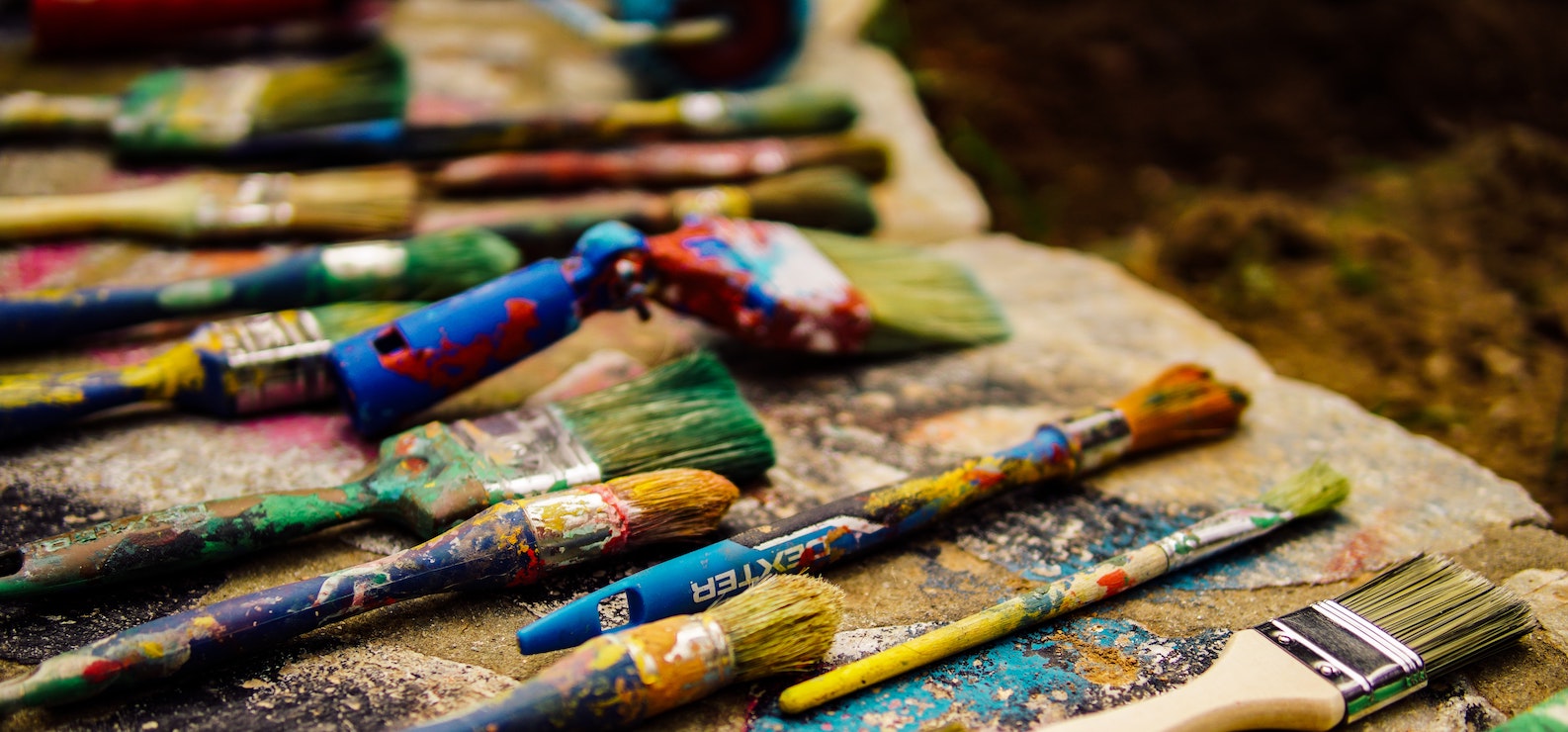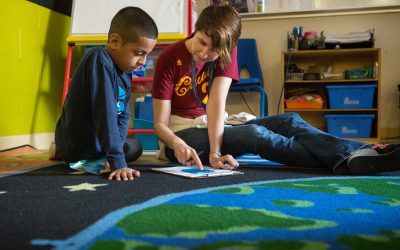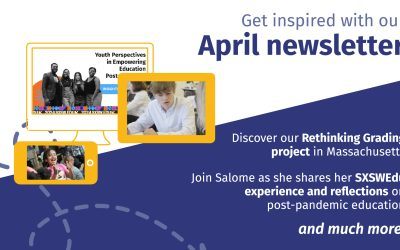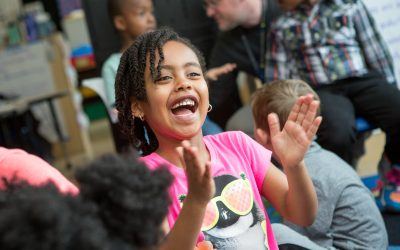By Jon M Altbergs and Laurie Gagnon
At reDesign, we encourage the adoption of a Learning Cycle that guides the learner through the habits and skills to support the development of competency with practice over time.
The Create stage of the learning cycle invites learners to put their knowledge and skills into practice through the creation of an authentic product, performance, solution, or action. In this post, our fourth of five posts about the Learning Cycle, we’re going to explore the Create stage of the Learning Cycle.
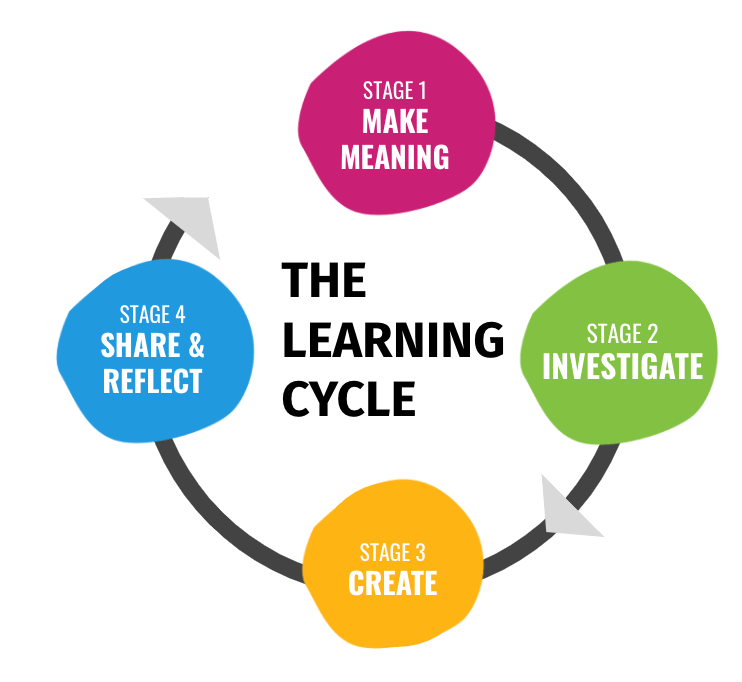
At its core, the Create phase of the Learning Cycle is an opportunity for students to put their learning into action, creating meaningful demonstrations of their newly acquired knowledge and skills. When students create, they solidify their learning in deep ways that build lasting competence. Creation invites learners to develop and use critical skills and capabilities, such as problem-solving, collaboration, and reflection, that have lifelong value and importance to both the individual and the community. Open-ended and authentic creation allows students to connect their learning to their lived experiences and make personal connections between the school and the vibrant community within which it is nested.
Therefore, performance assessments—or performance tasks—anchor the Create phase. A performance task is a demonstration of the application of knowledge and high-order skills to an authentic, real-world problem or task, tailored to a specific audience, and assessed by clear criterion-referenced expectations for success. That definition does a lot of heavy lifting, so there’s a lot to unpack here.
There is a strong body of research in support of performance assessment that is built around the creation of authentic products. The Rigor, Relevance, Agency Task and Project Quality Checklist puts that research into action, with a focus on designing opportunities for students to create in ways that allow them to demonstrate their developing competence on transferable skills and essential knowledge, while also fostering student agency as they exercise voice and choice in their products.
Authenticity, the real-world relevance of a task, is a key feature of performance assessment. There are various ways for a task to be authentic—through format, purpose, and audience (check out this prior blog post on assessment in competency education for more detail)—and authenticity exists along a continuum, rather than as a binary “yes, the project is authentic” or “no, the project is not authentic.” So, not every performance task will be fully authentic, and there is still added quality when students create products for audiences beyond the teacher and purposes beyond earning a grade. For example, students can share their work with audiences outside the classroom but still within the school, such as when they design infographics to raise awareness of an issue among their peers or read their personal narratives to entertain students in earlier grades. Role-play and scenarios can lend authenticity by asking students to take on imagined career or community roles as they solve problems inspired by real situations outside of school. These dimensions of authenticity enhance the open-ended nature of performance assessment by expanding the opportunities learners have to create something beyond the “right answers” of traditional assessment.
Learner-centered communities provoke positive change, believing that a better world is possible when our educational institutions teach critical thinking and creative problem-solving, while fostering a sense of efficacy in every learner. Grounded in the ideas of philosopher and educator Paulo Freire, Critical Consciousness involves engaging learners both in critically examining the world, and in taking action to interrogate and disrupt systems that create inequities and oppression.
Authentic performance tasks, especially when rooted in the realities of students’ communities, are powerful means of building Critical Consciousness. They bring together knowing and action, creating the stage for reflection and praxis. Consciousness raising can be done with a variety of topics, but ideally the content and purpose of what students create are informed by the goals of advancing toward a more equitable and just society. How much more powerful this is than merely taking a test?!
Making Opportunities for Students to Create
When the performance task takes place, relative to the rest of the unit, and how long the performance task takes to complete are key considerations. Generally speaking, we break performance tasks into two broad categories: short performance tasks and embedded performance tasks.
- Short performance tasks take place at the end of a lesson or lesson series and provide opportunities for learners to apply their new skills and knowledge “on-demand” to real-world problems or situations on a smaller scale.
- Embedded performance tasks are integrated throughout the unit of study, and typically involve multiple stages of work that build toward a final product or “project” (e.g., business plan, infographic, garden design, argumentative essay).
Over time, what students create and refine in each project or unit builds the body of evidence for their portfolio of learning and growth over the course of their learning/time in school.
The inner gear of the learning cycle continues to operate during the Create phase, as students continue to Make Meaning, Investigate, and Synthesize and Reflect, though the focus shifts to building learner competency in the processes and skills necessary to develop a quality product or performance. For example, each of these are skills to teach and practice in the Create phase:
- Prewrite, plan, outline
- Draft, sketch, or prototype
- Practice
- Give and receive feedback
- Test and iterate
- Revise and incorporate feedback
- Edit or finalize
OK, I’m sold on including opportunities for learners to CREATE. Where do I start?
Developing opportunities for students to Create has multiple entry points. We offer these practical ways to begin the process of incorporating authentic performance assessment that allows students to demonstrate their competency.
Embed a performance assessment into an upcoming unit
- reDesign’s Design Lab Performance Tasks provide the building blocks for a number of different products aligned to key college and career ready competencies. These tools can be used to craft your own performance task aligned to your disciplinary content and authentic applications. reDesign’s Problem Frame Design Guide provides step by step guidance for designing student inquiry around an engaging and relevant problem or essential question.
Implement an existing project
- This Teachable Moment offers a primer on Project Based Learning (PBL) and 21 easy-to-implement, “follow the recipe” PBL projects designed for parents, but adaptable for the classroom.
- The Know Your Rights Participatory Youth Action Research documentary film site is a resource hub with a Project Blueprint and example Learning Experiences resources to get started in creating an extended documentary film project driven by student questions and research.
- The Buck Institute (now PBLworks) Out of the Gate projects are designed for both novices and veterans to PBL, and as such are a good place to begin if you’re new to performance assessment and interested in a project based learning framework.
- The Food Matters performance task and learning modules highlight how to use a problem-based frame and create student-facing modules that are built around the learning cycle.
Join the community!
Sign up to receive our newsletter, access best-of educational resources, and stay in the know on upcoming events and learning opportunities. We hope to see you soon!

